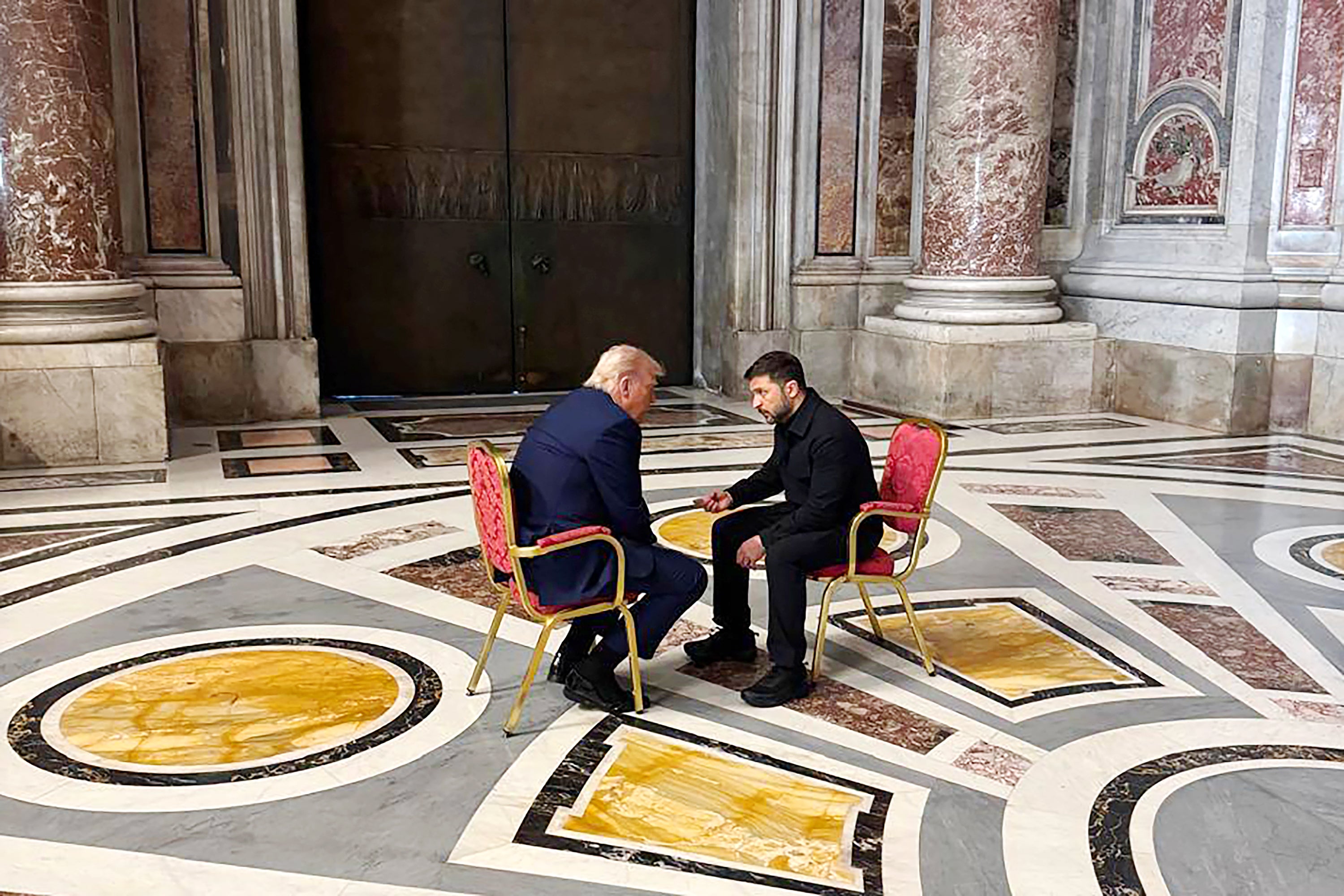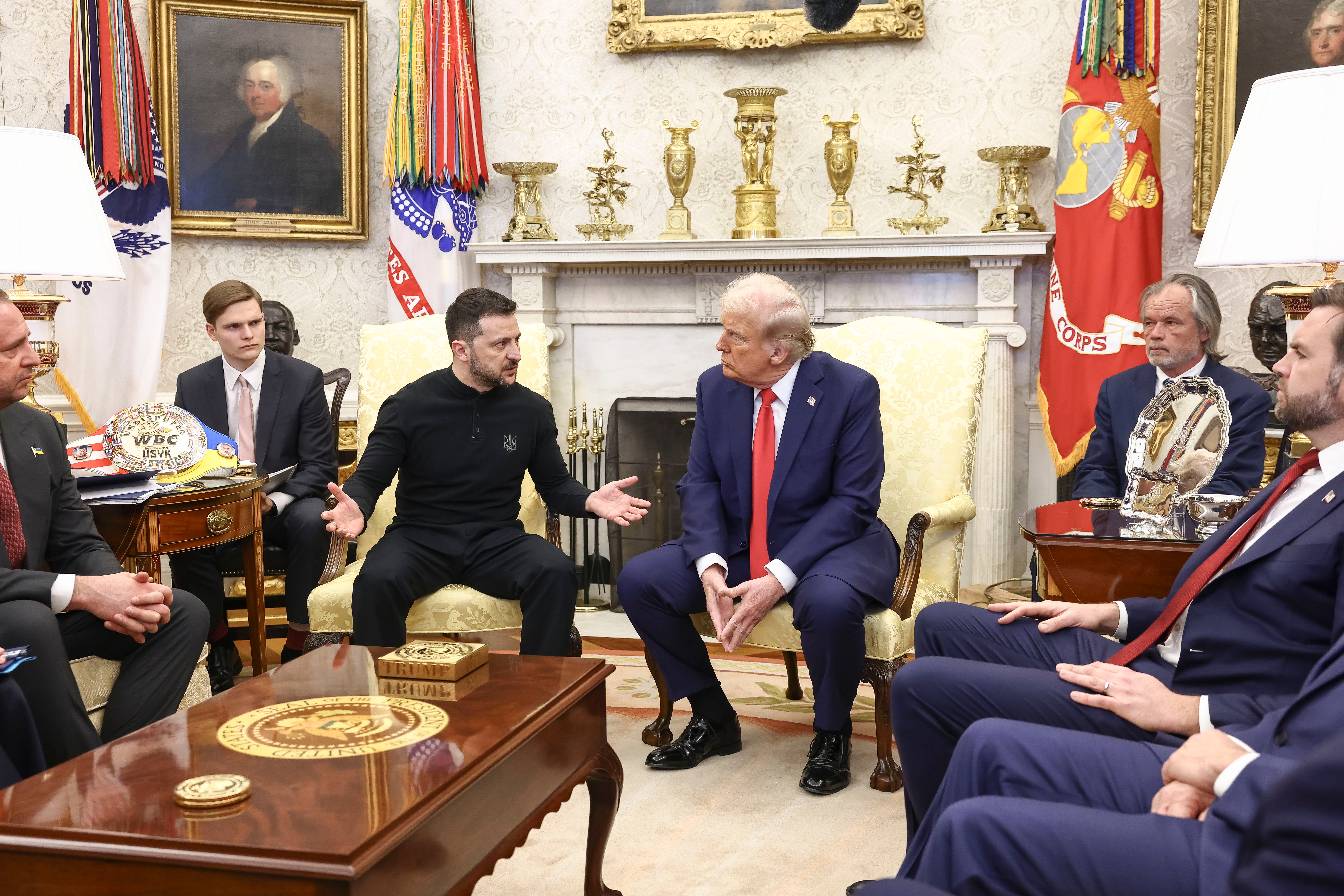Ukraine signed a mineral and profit-sharing deal with the United States on Wednesday evening in Washington DC following two months of testy negotiations.
The agreement will give the United States preferential access to new Ukrainian minerals deals and fund investment in Ukraine’s reconstruction.
Previous versions of the deal presented by Donald Trump’s negotiators insisted that Ukraine pay back the aid the US had given it over the last three years of war. The latest version, according to Ukraine’s prime minister Denys Shmyhal, no longer makes that demand.
Mr Shmyhal said the reworked agreement has become a “real partnership deal”, which could consider future US aid as part of contributions to a joint investment fund.
Yulia Svyrydenko, Ukraine’s first deputy prime minister in charge of economic affairs, landed in DC on Wednesday to sign the deal.
Ms Svyrydenko said the partnership will be equal, on a 50/50 basis, confirming that the agreement includes no debt obligation to the US.
She said the accord allowed Ukraine to “determine what and where to extract” and that its subsoil remains owned by Ukraine.
Ukraine is rich in natural resources including rare earth metals which are used in consumer electronics, electric vehicles and military applications, among others.
The US Treasury Department said: “In recognition of the significant financial and material support that the people of the United States have provided to the defense of Ukraine since Russia’s full-scale invasion, this economic partnership positions our two countries to … accelerate Ukraine’s economic recovery.”

The US secretary of the Treasury Scott Bessent said: “Thanks to President Trump’s tireless efforts to secure a lasting peace, I am glad to announce the signing of today’s historic economic partnership agreement between the United States and Ukraine establishing the United States-Ukraine Reconstruction Investment Fund.”
The deal does not mention Ukrainian liability for past aid spent, which Mr Morezkho said was a “victory”. President Trump had previously demanded $300bn in back payments on the US contribution to the defence of Ukraine, which has in fact been about $130bn since 2022.
“Both countries will be equal parties in the sharing of investment and an equal share in the resources of Ukraine. The profits, for the first 10 years, for both countries, will be spent on rebuilding Ukraine infrastructure and local investment,” Mr Morezkho told The Independent.
He said that there would be no taxes on the US part of the fund and no tariffs on Ukrainian mineral exports to the US.
The key issue of Ukraine’s security appears to have been addressed by references to the Budapest Memorandum, the 1994 documents signed by China, Russia, Ukraine, the US and UK, that guaranteed Ukraine’s security when it gave up its vast nuclear arsenal.
There is a hope that by having US investments in Ukraine the Trump administration will see this as having skin in the game and take the defence of Kyiv more seriously.
So far this year, Mr Trump has taken a strongly pro-Russian line and adopted many of the Kremlin’s demands as his own in prescribing the terms for a ceasefire.
The agreements will have to go before the Ukrainian parliament for ratification. Mr Morezkho said he was likely to support it but wanted to see the details of the first phase of the agreement and the extent to which it would result in greater security for Ukraine.

Other Ukrainian sources said that they thought US would have had to express interest in Ukraine’s security because that would be essential in getting the backing of President Volodymyr Zelensky.
The first phase of the deal has also dropped previous American demands to control Ukraine’s infrastructure.
The softening of the US position through the negotiations may have been helped by a hard line taken by Vladimir Putin over ceasefire talks. Ukraine has repeatedly offered an unconditional 30-day, or more, ceasefire in talks brokered by Washington. Mr Putin, meanwhile, has refused the offers and demanded ceasefires in areas where he is vulnerable – notably the Black Sea.
The deal is unlikely to affect Mr Putin’s offer of a three-day ceasefire to mark Russia’s celebration of victory over Nazi Germany on 8 May.
It does, however, represent a shift in the attitude of the Trump administration to Ukraine. Mr Zelensky has already said that he would back a 30-day ceasefire from 8 May but that he believed the Russian proposal was a stunt.
The key is that the US had shown every sign that if, as threatened, they walked away from negotiations in frustration, Ukraine risked being blamed. This would have jeopardised continued military and intelligence support for Kyiv.
With a mineral deal imminent, marking 100 days of the Trump administration, Ukraine and the US can share a joint “win” – and Kyiv may, for now, believe that while Mr Trump’s support is not morally driven, it may now be underwritten by the prospects of American profits.

